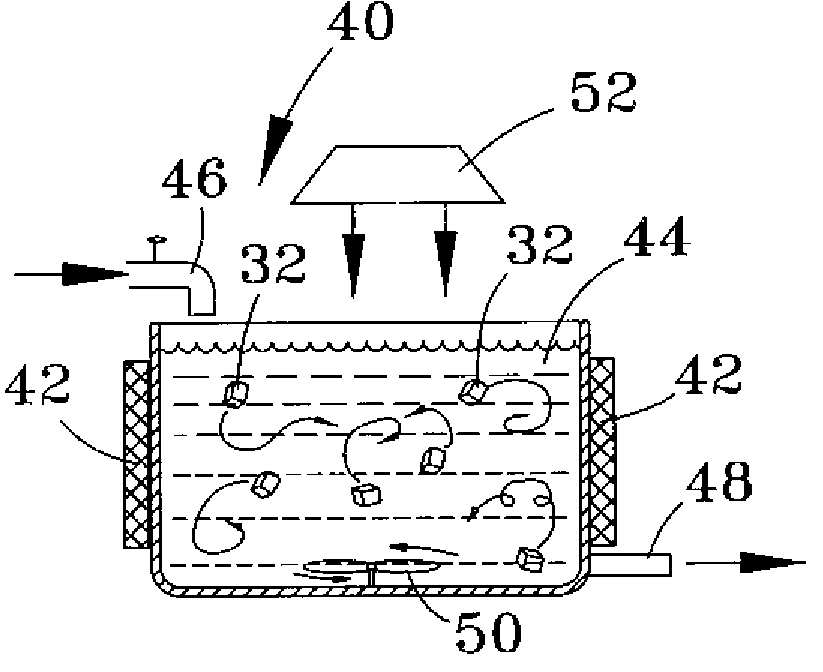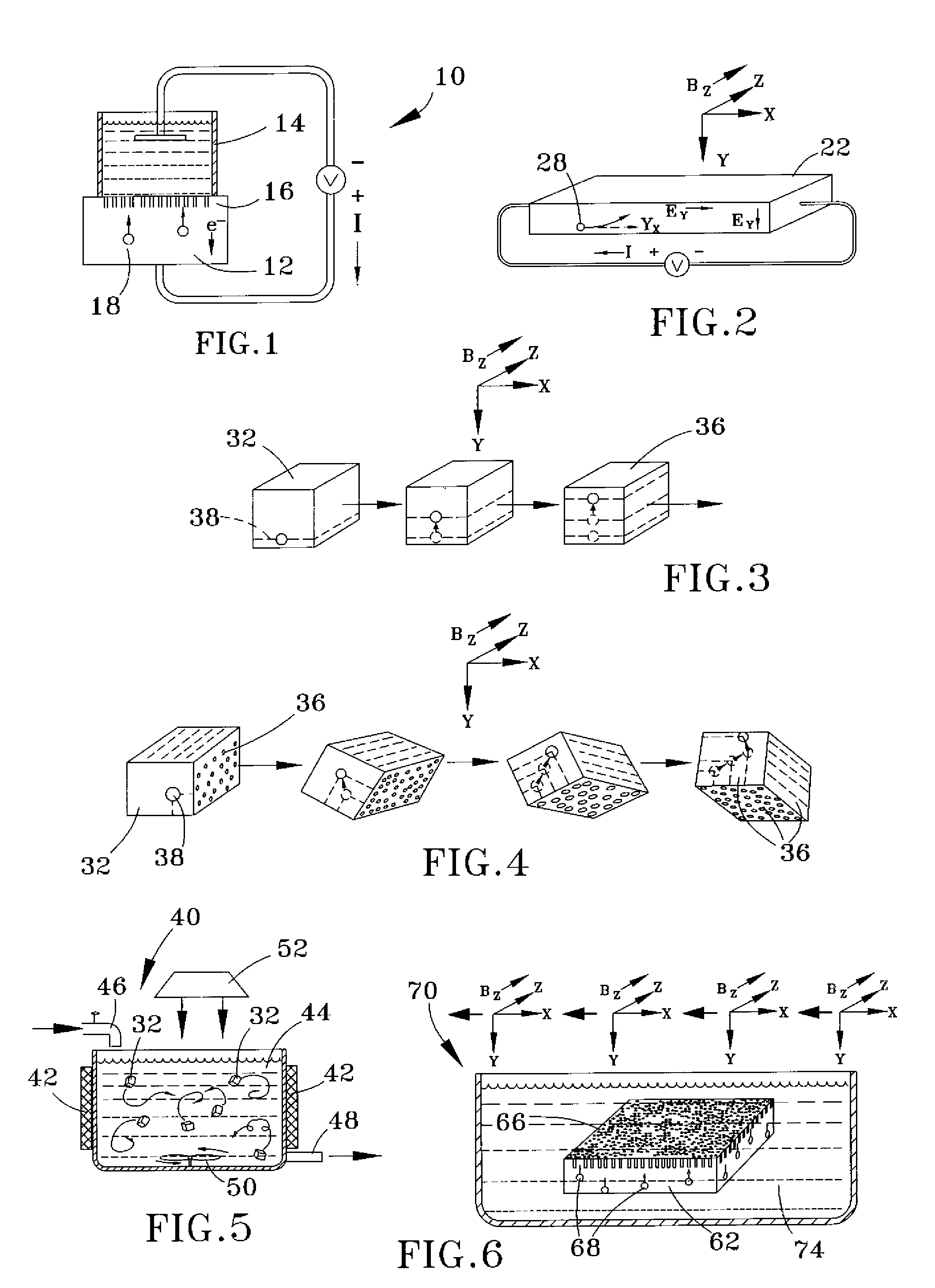Processes and apparatuses for producing porous materials
a technology of porous materials and processing equipment, applied in the direction of chemistry apparatus and processes, paper/cardboard articles, silicon compounds, etc., can solve the problems of reducing the efficiency of the entire process, lack of convenience of gasoline, lack of flexibility of electrical energy stored in batteries and capacitors, etc., to promote the formation of porosity within the substrate, reduce pore size, and optimize npsi formation
- Summary
- Abstract
- Description
- Claims
- Application Information
AI Technical Summary
Benefits of technology
Problems solved by technology
Method used
Image
Examples
Embodiment Construction
[0028]The present invention provides processes for forming a porous material, and particularly a porous solid-state hydrogen storage material, by relative movement between a magnetic field and a neutral substrate during a pore-forming etch of the substrate. The substrate contains charge carriers (electrons and positively-charged holes) that can be present in the substrate as the result of, for example, thermal generation, photogeneration, application of a very high frequency magnetic or electric field, time variation of an electromagnetic field, ionizing radiation, or appropriate doping (for example, p-doping and formation of doping gradients or p-n junctions). Because of Lorentz forces, the holes are acted upon by relative movement between the magnetic field and substrate, and thus relative movement between the magnetic field and the holes within the substrate. With the substrate properly oriented with respect to the magnetic field, holes in the substrate can be preferentially forc...
PUM
| Property | Measurement | Unit |
|---|---|---|
| diameters | aaaaa | aaaaa |
| wavelength | aaaaa | aaaaa |
| temperature | aaaaa | aaaaa |
Abstract
Description
Claims
Application Information
 Login to View More
Login to View More - R&D
- Intellectual Property
- Life Sciences
- Materials
- Tech Scout
- Unparalleled Data Quality
- Higher Quality Content
- 60% Fewer Hallucinations
Browse by: Latest US Patents, China's latest patents, Technical Efficacy Thesaurus, Application Domain, Technology Topic, Popular Technical Reports.
© 2025 PatSnap. All rights reserved.Legal|Privacy policy|Modern Slavery Act Transparency Statement|Sitemap|About US| Contact US: help@patsnap.com


